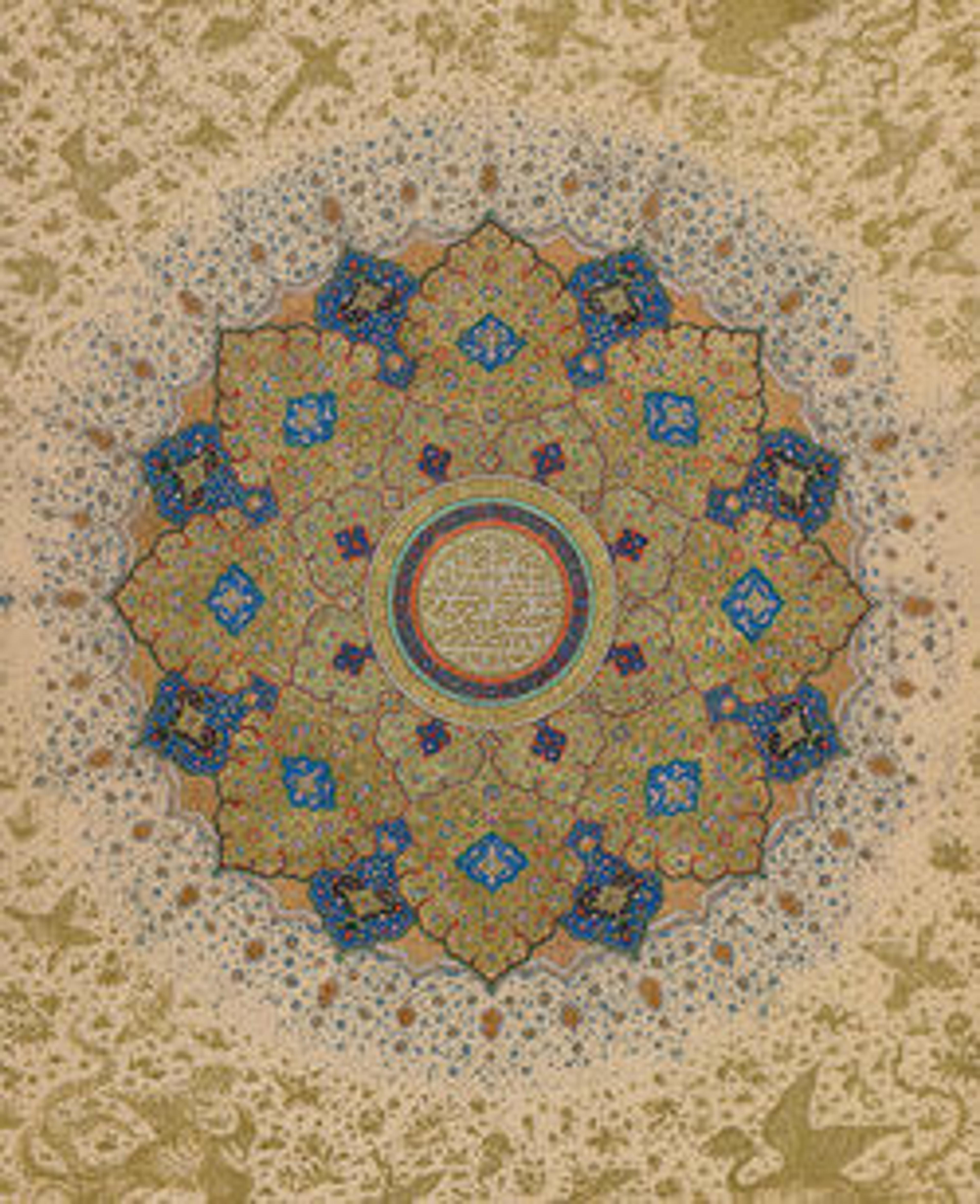Woven Wall Hanging
Kashmir was famous for its beautiful woven shawls made of the fine goat’s wool called pashmina, woven in the distinctive double-interlocking tapestry weave style. Hangings, cushion covers, and some articles of clothing were also made in this technique, in which the piece was woven with bobbins or spools, with the weft colors inserted as required by the pattern, interlocking where two adjoining colors meet. Floral motifs were the most common decoration on the Kashmiri woven textiles, the most distinctive being the bota, a conelike design of a flower or shrub with a curving tip.
Artwork Details
- Title:Woven Wall Hanging
- Date:ca. 1820–30
- Geography:Attributed to India, Kashmir
- Medium:Wool, metal wrapped thread; double interlocking twill; tapestry weave, embroidered
- Dimensions:L. 72 in. (182.9 cm)
W. 51 3/4 in. (131.4 cm) - Classification:Textiles-Woven
- Credit Line:Museum Accession
- Object Number:x.103.4
- Curatorial Department: Islamic Art
More Artwork
Research Resources
The Met provides unparalleled resources for research and welcomes an international community of students and scholars. The Met's Open Access API is where creators and researchers can connect to the The Met collection. Open Access data and public domain images are available for unrestricted commercial and noncommercial use without permission or fee.
To request images under copyright and other restrictions, please use this Image Request form.
Feedback
We continue to research and examine historical and cultural context for objects in The Met collection. If you have comments or questions about this object record, please contact us using the form below. The Museum looks forward to receiving your comments.
